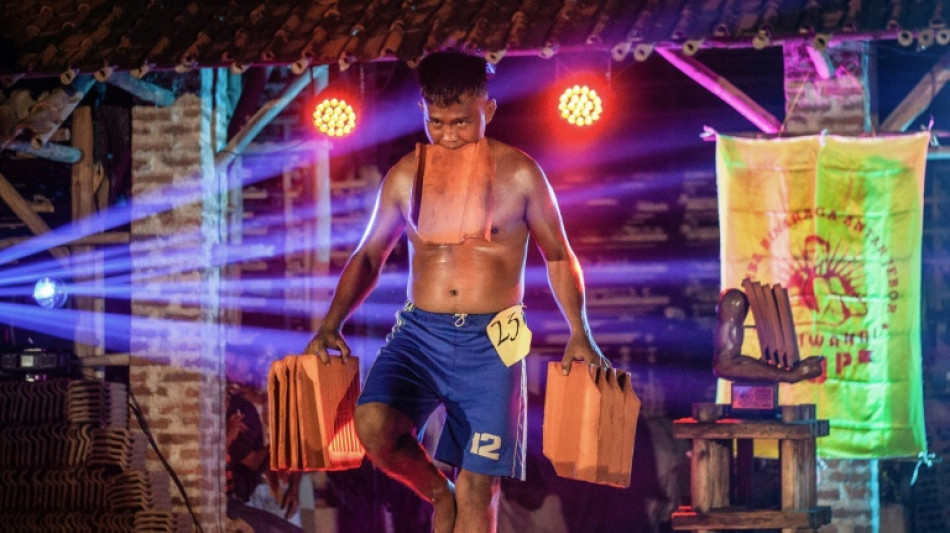

Indonesian roof tilers flex muscles to keep local industry alive
A young Indonesian man turns his back to a crowd, flexing his oiled-up muscles before picking up a stack of roof tiles, holding as many as he can in a pose reminiscent of Mr. Olympia.
This is a bodybuilding battle of a different kind -- one where competitors are roof tile factory workers who pump clay instead of iron to bring attention to their dwindling trade.
In Java's Jatiwangi city, an Indonesian hub for clay roof tile production nearly 200 kilometres from the capital, Jakarta, dozens of men have been lathering on oil to pose for crowds since 2015 to show they are not going anywhere.
The clay industry in Jatiwangi is more than a century old, when terracotta tiles drawing on local heritage were first made by hand to replace thatched house roofs.
They are now mostly used for housing, and in the 1930s inspired Indonesia's former Dutch colonial rulers to tile their own government buildings and employee homes.
"But over time, it started to fade away," said Illa Syukrillah Syarief, a 48-year-old worker at the Jatiwangi Art Factory who helps to organise the competition.
"So we feel that we're not just here to tell stories about roof tiles, but also to be saviours, to preserve the culture of Jatiwangi roof tiles."
The workers use clay or local soil to make their tiles, but the younger generation is taking on fewer manual labour jobs and big industry is hitting the revenues of local trade.
It has caused fear that their industry could become a forgotten art in the future.
"We're pushing through in a situation that's not going so well," said Illa.
"We've lost workers, and the demand isn't what it used to be."
- 'Distinctive style' -
The shirtless men, young and old, posed for a crowd that included women clad in hijabs and judges who pick the winners of cash prizes up to 1.5 million rupiah ($92) for the number one spot.
Attendee Ika, who like many Indonesians goes by one name, called the show "something unique" that displayed "bodybuilding with a distinctive style" rooted in Indonesian culture.
The winnings are donated by rival factories whose workers battle it out against one another in the competition, with no sponsors yet stumping up cash for the event.
"It was incredible to see the competitors and their style, and all the many things they can do using their hands, using their mouth even, carrying tiles," said foreign judge Alessa Cargnell.
The red, earthy tiles have a curved shape that lock in together, making it easier to clasp a stack and pose from the front or the side.
One man displayed incredible power to hold a tile between each finger and one from his mouth while standing on one leg, as remixed traditional music typically heard in Indonesian TikTok videos blared in the background.
But the strength of the roof tile workforce is not only reserved for the weight room.
"We're still determined. The hope is that roof tiles, or processing the soil in Jatiwangi, won't just be a commodity," said Illa.
"But truly become an identity: as roof tile makers, as people who work with the earth."
G.Galli--GdR



